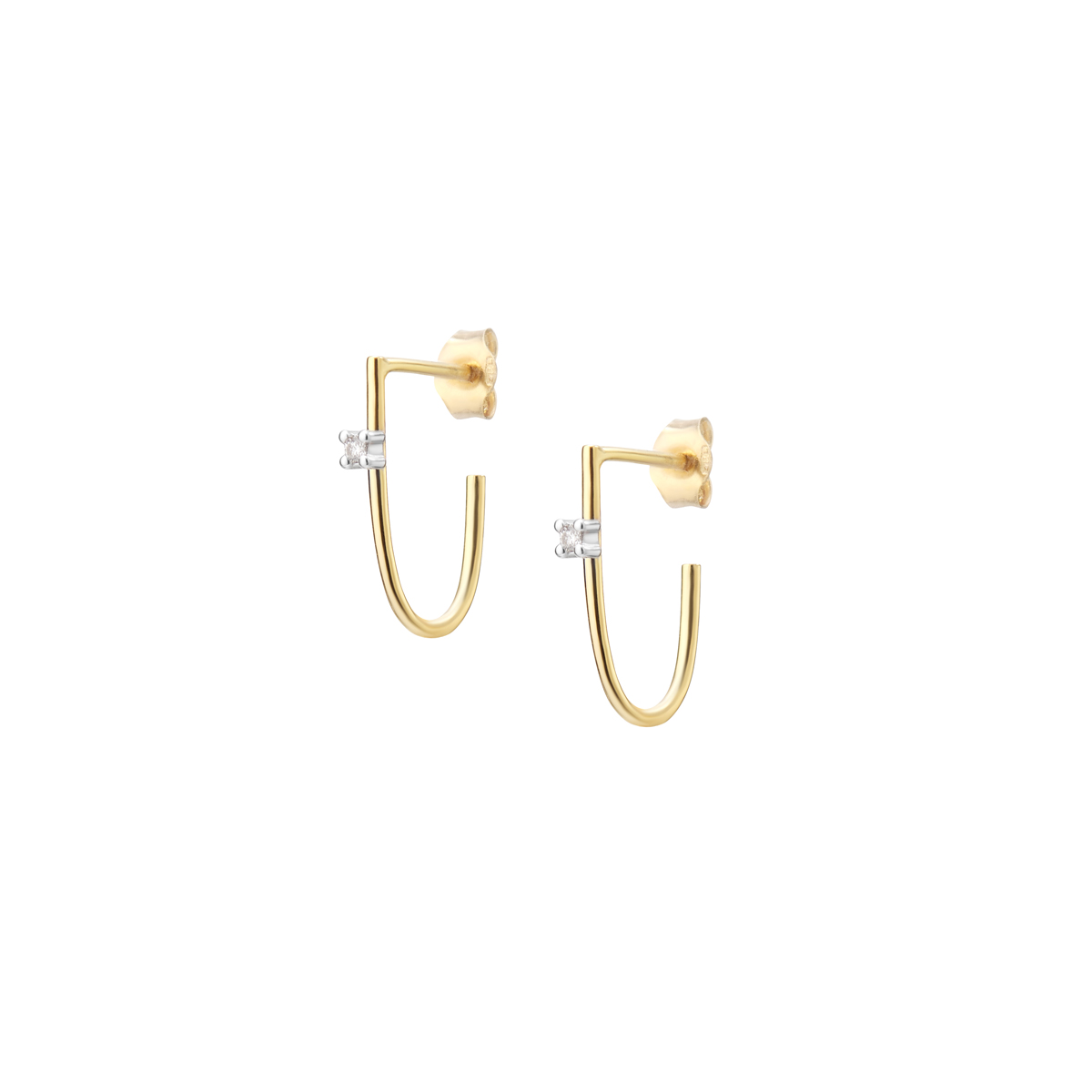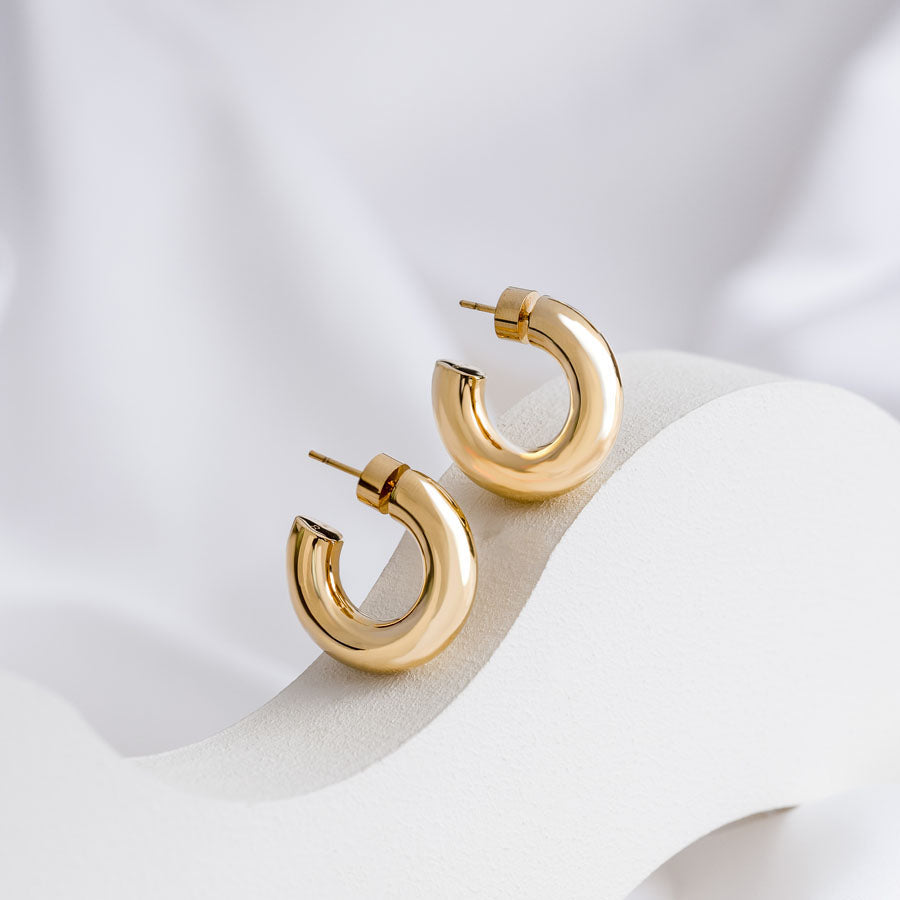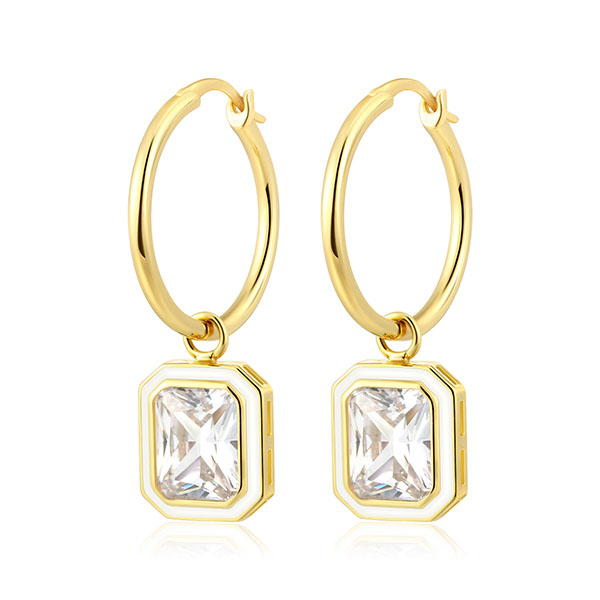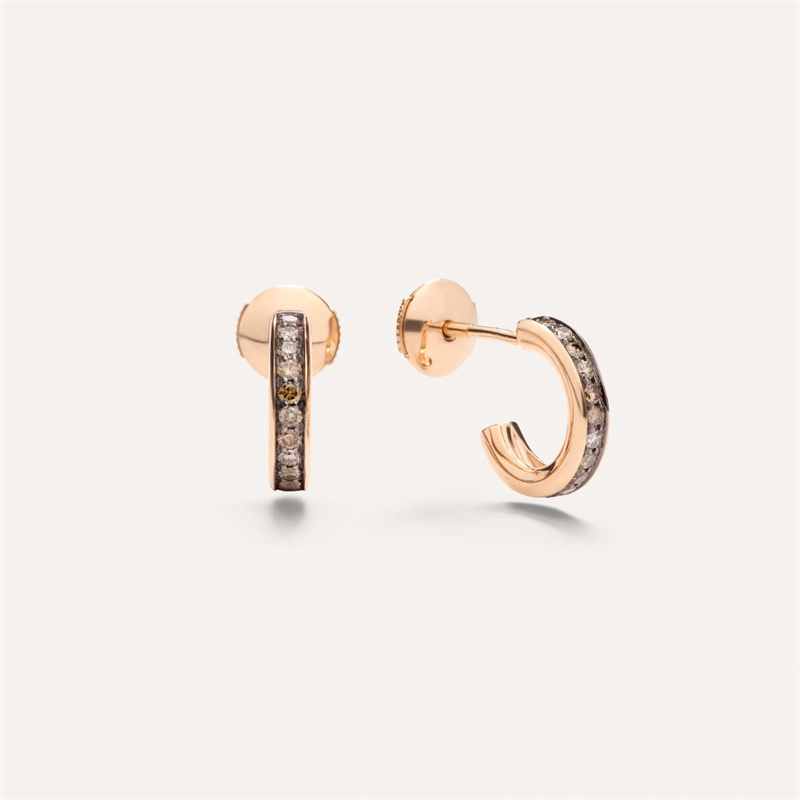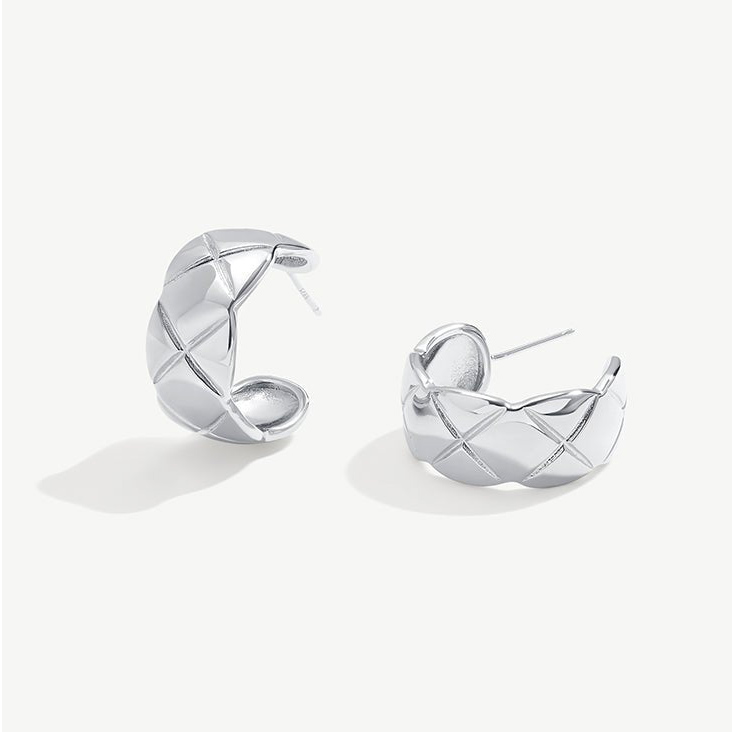Making a Custom gold plated silver earring from JINGYING manufacturer
Makes custom jewelry supplier
LET’S GET STARTED : mo@kingjy.com
Of course. Here is a comprehensive 5000-word article on the process of creating custom gold-plated silver earrings, with a focus on the manufacturing journey at a facility like JINGYING.
The Alchemy of Elegance: A Journey into Crafting Custom Gold Plated Silver Earrings with JINGYING Manufacturer
In the realm of fine jewelry, few pieces hold the universal appeal and personal significance of a pair of earrings. They are a whisper of style, a statement of identity, and often, a cherished heirloom in the making. When that pair is not just bought off the shelf but meticulously custom-designed and crafted from precious materials, its value transcends the monetary. It becomes a wearable story, a unique expression of individual taste. This is the art and science that specialty manufacturers like JINGYING have mastered. The process of transforming a mere idea into a pair of exquisite, custom gold-plated sterling silver earrings is a fascinating journey that blends ancient craftsmanship with modern technology, creative vision with precise engineering. This article will take you through every intricate step of this journey, from the initial spark of an idea to the final, polished product ready to adorn its wearer.
Chapter 1: The Conception – From Vision to Virtual Blueprint
The journey of a custom earring begins not in a factory, but in the mind of the client—be it an individual, an independent jewelry designer, or a retail brand. This initial phase is all about communication, translation, and feasibility.
1.1 Initial Consultation and Ideation
The process kicks off with a detailed consultation. At a manufacturer like JINGYING, this typically involves a team of account managers and design engineers. The client arrives with inspiration: perhaps a mood board, sketches, a vintage piece they want to replicate, or simply a collection of adjectives—”minimalist,” “art deco,” “organic,” “bold.” The manufacturer’s role is to listen, interpret, and advise.
Key questions are explored:
- Design Aesthetic: What is the overall style?
- Material Specifications: The core materials are predetermined—sterling silver as the base and gold plating. But what karat of gold? 14k, 18k, or 24k gold plating each offers a different color and durability. Is the client interested in yellow gold, rose gold, or white gold plating?
- Stone Setting: Will the earrings feature gemstones? If so, what type (diamond, cubic zirconia, sapphire, etc.), size, cut, and quality? How will they be set (prong, bezel, pave)?
- Functionality: What type of earring finding is required? Hook wires (French wires), studs with friction backs, lever-back hooks, or hoop components? This choice is crucial for both aesthetics and security.
- Target Price Point: A professional manufacturer like JINGYING must guide the design towards a product that is not only beautiful but also commercially viable for the client.
1.2 Technical Design and 3D Modeling
Once the conceptual direction is agreed upon, the abstract idea must be translated into a precise, technical blueprint. This is where modern jewelry manufacturing truly shines. Using advanced Computer-Aided Design (CAD) software, a skilled CAD designer creates a digital 3D model of the earring.
This stage is incredibly powerful:
- Precision and Accuracy: The CAD model is built to exact millimeter specifications. Every curve, every prong, every undercut is defined with mathematical precision.
- Visualization: The client receives photorealistic renderings of the model from every angle. They can see exactly how the piece will look before any metal is ever poured. This eliminates costly misunderstandings later.
- Iteration and Modification: Making changes is simple. Want the hoop 2mm wider? The stone slightly smaller? The engraving deeper? These adjustments are made digitally in minutes, not days.
- Engineering for Production: The CAD designer doesn’t just create a pretty picture; they engineer the piece for manufacturability. They ensure that walls are thick enough to be durable but not wasteful, that settings will securely hold stones, and that the design can be successfully cast and plated.
The approval of the 3D model by the client is a critical milestone, locking in the design and granting the manufacturer the green light to proceed to physical production.
Chapter 2: The Foundation – Crafting the Sterling Silver Master
With the digital model approved, the process moves from the virtual world to the physical, beginning with the creation of a master pattern.
2.1 3D Printing the Prototype (Rapid Prototyping)
The approved CAD file is sent to a high-resolution 3D printer. This isn’t your typical desktop printer; it uses specialized technology such as Stereolithography (SLA) or Digital Light Processing (DLP). These printers use a vat of liquid UV-curable resin. A laser or projector traces the shape of the earring layer by layer, solidifying the resin precisely according to the CAD data.
The result is a exact physical replica of the digital design, known as a “pattern” or “prototype.” This resin pattern is incredibly detailed, capturing even the most intricate textures and filigree. It is then cleaned, washed, and cured under UV light to achieve its final hardness and stability.
2.2 The Ancient Art of Lost-Wax Casting (Investment Casting)
The resin pattern is now used to create a mold for metal casting, following a process that jewelry makers have used for thousands of years, albeit with modern refinements—a process known as lost-wax (or investment) casting.
- Spruing: The delicate resin pattern is attached to a wax “tree” using a wax rod called a “sprue.” This acts as a conduit for the molten metal. A single tree can hold dozens of patterns for efficient production.
- Investing: The entire tree is placed inside a steel flask and surrounded by a liquid investment plaster—a fine, ceramic-like slurry. The flask is then placed in a vacuum chamber to remove any air bubbles, ensuring the investment captures every minute detail of the patterns.
- Burnout: The invested flask is placed in a kiln and heated according a very specific cycle. The heat does two things: it hardens the investment into a solid, heat-resistant mold, and it literally “burns out” the resin patterns inside, leaving behind perfect hollow cavities in the shape of the earrings—hence the name “lost-wax” casting.
- Casting: The hot flask is quickly transferred to a casting machine. The most common method for quality silver jewelry is vacuum or centrifugal casting. Pre-measured amounts of sterling silver (an alloy of 92.5% pure silver and 7.5% copper for strength) are melted in a crucible. The machine then uses centrifugal force or a vacuum to forcefully draw the molten silver into the empty cavities of the flask.
- Quenching and Devesting: Once the metal has cooled and solidified, the flask is plunged into water. The investment plaster shatters away from the metal tree—a process called “devesting.” What remains is a rough, metallic “tree” of solid silver earrings, now called “castings,” still attached to their sprues.
2.3 The First Steps of Finishing
The raw castings are cut from the sprue tree using saws. They are now recognizable as earrings, but they are rough, matte, and covered with a ceramic residue from the investment. They undergo initial finishing:
- Tumbling: The earrings are placed in a tumbling machine with an abrasive media (often small steel shots) and a cleaning compound. This process, which can take hours, work-hardens the metal, removes surface imperfections, and begins to polish the surface.
- Pre-Polishing: Any remaining investment or roughness is manually removed by craftsmen using files, sanding papers, and burs on flexible-shaft machines. This step requires a skilled hand to smooth surfaces without altering the design’s details.
At this stage, the earrings are in a state of “raw” sterling silver. They are strong, accurately shaped, and smooth, but lack the final luster and, of course, the gold color.
Chapter 3: The Art of Embellishment – Stone Setting and Detailing
If the design calls for it, this is the stage where gemstones are set and any special textures or engravings are applied.
3.1 Stone Setting: A Master Craftsman’s Touch
Stone setting is one of the most skilled disciplines in jewelry making. A master setter takes over at this point.
- Preparation: The seats for the stones (called “beads” for prong settings or “channels” for channel settings) are carefully cleaned and prepared using tiny burs to ensure a perfect fit.
- Setting: Using specialized tools like pushers, tweezers, and microscopes, the setter meticulously places each stone into its seat. For prong settings, the setter carefully pushes small prongs of metal over the girdle of the stone to secure it. For pave settings (involving many small stones set close together), the setter must carve tiny beads of metal from the surrounding surface to hold each stone, a painstaking and time-consuming process. The goal is security first, and aesthetics second—the stones must be held firmly while allowing maximum light to enter for brilliance.
3.2 Engraving and Texture Work
Any custom engraving—be it a monogram, a pattern, or a texture—is applied at this stage. This can be done by hand by an engraver using fine gravers (sharp chisels) for a unique, artisanal feel, or via laser engraving machines for absolute precision and repeatability on larger orders. Textures like hammered, brushed, or matte finishes are also created now using specialized tools and techniques.
Chapter 4: The Gilded Transformation – The Gold Plating Process
This is the pivotal stage where the sterling silver earrings receive their signature golden finish. Gold plating is not merely dipping; it’s a complex electrochemical process that demands a sterile environment and exacting standards.
4.1 Preparation: Polishing and Ultrasonic Cleaning
The absolute key to a flawless, long-lasting plating job is immaculate preparation. Any trace of oil, dirt, or oxidation on the silver surface will prevent the gold from adhering properly, leading to peeling or tarnishing.
- High-Polishing: The earrings are polished on rotating wheels with increasingly fine polishing compounds (rouges) until they achieve a mirror-bright finish. This is the surface the customer will see shining through the gold layer.
- Ultrasonic Cleaning: The polished earrings are placed in an ultrasonic cleaner, a tank filled with a heated, alkaline solution. High-frequency sound waves create millions of tiny bubbles that scrub away every micron of polishing compound, dust, and grease.
- Electro-Cleaning: For an even deeper clean, the pieces may be run through an electro-cleaning bath. An electrical current is passed through a chemical solution, causing hydrogen or oxygen to bubble from the surface of the jewelry, physically lifting away any remaining contaminants.
4.2 The Plating Bath: Electroplating
The perfectly clean and polished earrings are now ready for plating. They are carefully mounted onto conductive racks that will carry the electrical current.
- The Setup: The rack is immersed in a temperature-controlled tank containing a solution of water, proprietary chemicals, and a dissolved form of the desired gold (e.g., potassium gold cyanide for 24k gold).
- The Process: The rack of earrings is connected to the negative terminal (cathode) of a rectifier (a low-voltage DC power supply). A solid piece of pure gold (or platinum for rhodium plating) is connected to the positive terminal (anode). When the current is switched on, a fascinating electrochemical reaction occurs: gold ions from the solution are attracted to the negatively charged earrings and deposit onto their surface, forming a uniform metallic coating. The gold from the anode dissolves to replenish the ions in the solution.
- Control: The thickness of the plating is meticulously controlled by the amperage (current) and the time the pieces spend in the bath. For a standard “flash” plating, this might be a matter of seconds, resulting in a layer just 0.05 to 0.10 microns thick. For a high-quality, durable plating like “heavy gold electroplate” (HGE) or “vermeil,” the process is longer. Vermeil (pronounced ver-may), a specific and premium category, requires a gold thickness of at least 2.5 microns over a sterling silver base, as defined by US standards. This substantial layer is what gives JINGYING’s high-end pieces their exceptional durability and rich color.
4.3 Post-Plating Treatment
Once the desired thickness is achieved, the rack is removed from the bath and thoroughly rinsed in deionized water to stop the chemical process and remove any plating salts. The plated earrings are then often treated with an anti-tarnish solution or sealed with a protective lacquer (especially for rose gold, which can be prone to oxidation) to further enhance their longevity and protect them from the elements before they reach the customer.
Chapter 5: The Final Assembly and Quality Assurance
The earrings are now nearly complete. They possess their final form and finish, but they often require assembly and must pass rigorous inspection.
5.1 Assembly
Many earring designs are multi-component. For example, a hook wire must be attached to a pendant, or a stud post must be soldered to the main decorative element. While soldering is typically done before plating to avoid damaging the gold layer, some final assembly might involve mechanical attachment (like threading a hoop through a clicker) or using hypoallergenic epoxy for non-heat methods. This is done with extreme care to avoid scratching the fresh plating.
5.2 Rigorous Quality Control (QC)
At a reputable manufacturer like JINGYING, quality control is non-negotiable. Every single pair of earrings is meticulously inspected multiple times throughout production. The final QC check is the most comprehensive:
- Visual Inspection: Under magnification and bright light, inspectors check for any surface defects: scratches, pits, plating inconsistencies (like bleaching or darkness), and overall finish.
- Dimension Check: The earrings are measured to ensure they match the specifications of the CAD model.
- Stone Check: Every stone is verified for security, ensuring no prongs are loose and no stones are missing or chipped. Their color and alignment are also checked.
- Function Test: All moving parts (e.g., lever-backs, hinged hoops) are tested for smooth operation and security. Posts and backs are checked for fit.
- Precious Metal Verification: The piece may be tested using X-ray Fluorescence (XRF) technology. This amazing tool can accurately measure the thickness of the gold plating and verify the underlying metal is sterling silver without damaging the piece.
Only after passing every single one of these checks is a pair of earrings deemed ready for market.
Chapter 6: Packaging and Fulfillment – The Final Presentation
The unboxing experience is the first physical touchpoint a client has with their custom creation. JINGYING and similar manufacturers understand that presentation is part of the product.
The earrings are given a final polish to remove any fingerprints from handling. They are then packaged according to the client’s specifications. This could involve:
- Individual Poly Bags: Anti-tarnish zip-lock bags for storage and protection.
- Branded Insert Cards: The earrings are mounted on high-quality cardstock that displays them beautifully and bears the client’s branding.
- Elegant Boxes: Plush, velvet-lined presentation boxes in various colors.
- Certification and Documentation: For higher-end pieces, a certificate of authenticity may be included, detailing the materials used (e.g., “Sterling Silver with 18k Rose Gold Vermeil Plating”).
- Bulk Packaging: For large orders, pieces are packed securely in larger boxes for safe shipping to the client’s distribution center or retail store.
Conclusion: The Synthesis of Art, Science, and Partnership
The creation of a custom gold-plated silver earring is a remarkable symphony of disparate elements. It is where the artist’s sketch converges with the engineer’s CAD model. It is where the ancient alchemy of lost-wax casting meets the precise electrochemistry of modern plating. It is where the master setter’s steady hand is complemented by the inspector’s exacting eye.
For a client, choosing a manufacturer like JINGYING is not merely outsourcing production; it is entering a partnership. It is a collaboration that leverages decades of expertise, state-of-the-art technology, and a deep, ingrained understanding of material science and aesthetics. The result is more than just an accessory. It is a tangible realization of a vision—a piece of jewelry that carries with it the weight of meticulous craftsmanship, the brilliance of precious materials, and the unique story of its creation. From a spark of imagination to a finished product of gleaming gold and radiant silver, each custom earring is a testament to human ingenuity and the endless pursuit of beauty.
